Emanuele Parisi
TuRTLe: A Unified Evaluation of LLMs for RTL Generation
Mar 31, 2025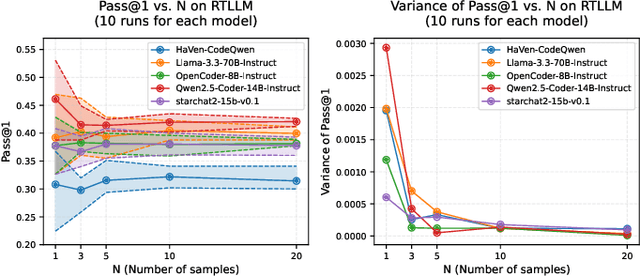
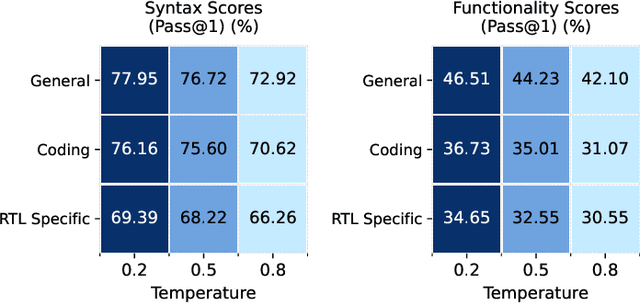
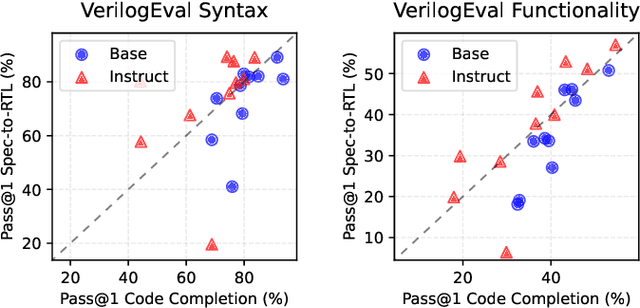
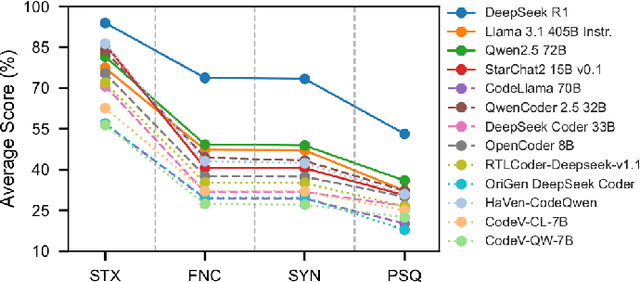
Abstract:The rapid advancements in LLMs have driven the adoption of generative AI in various domains, including Electronic Design Automation (EDA). Unlike traditional software development, EDA presents unique challenges, as generated RTL code must not only be syntactically correct and functionally accurate but also synthesizable by hardware generators while meeting performance, power, and area constraints. These additional requirements introduce complexities that existing code-generation benchmarks often fail to capture, limiting their effectiveness in evaluating LLMs for RTL generation. To address this gap, we propose TuRTLe, a unified evaluation framework designed to systematically assess LLMs across key RTL generation tasks. TuRTLe integrates multiple existing benchmarks and automates the evaluation process, enabling a comprehensive assessment of LLM performance in syntax correctness, functional correctness, synthesis, PPA optimization, and exact line completion. Using this framework, we benchmark a diverse set of open LLMs and analyze their strengths and weaknesses in EDA-specific tasks. Our results show that reasoning-based models, such as DeepSeek R1, consistently outperform others across multiple evaluation criteria, but at the cost of increased computational overhead and inference latency. Additionally, base models are better suited in module completion tasks, while instruct-tuned models perform better in specification-to-RTL tasks.
Unleashing OpenTitan's Potential: a Silicon-Ready Embedded Secure Element for Root of Trust and Cryptographic Offloading
Jun 17, 2024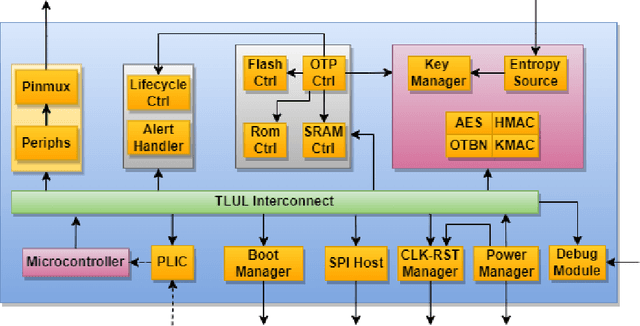

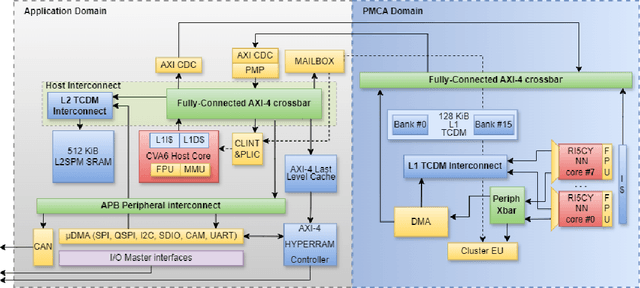
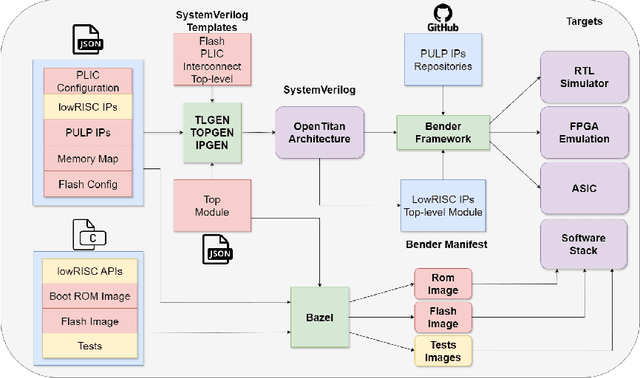
Abstract:The rapid advancement and exploration of open-hardware RISC-V platforms are driving significant changes in sectors like autonomous vehicles, smart-city infrastructure, and medical devices. OpenTitan stands out as a groundbreaking open-source RISC-V design with a comprehensive security toolkit as a standalone system-on-chip (SoC). OpenTitan includes Earl Grey, a fully implemented and silicon-proven SoC, and Darjeeling, announced but not yet fully implemented. Earl Grey targets standalone SoC implementations, while Darjeeling is for integrable implementations. The literature lacks a silicon-ready embedded implementation of an open-source Root of Trust, despite lowRISC's efforts on Darjeeling. We address the limitations of existing implementations by optimizing data transfer latency between memory and cryptographic accelerators to prevent under-utilization and ensure efficient task acceleration. Our contributions include a comprehensive methodology for integrating custom extensions and IPs into the Earl Grey architecture, architectural enhancements for system-level integration, support for varied boot modes, and improved data movement across the platform. These advancements facilitate deploying OpenTitan in broader SoCs, even without specific technology-dependent IPs, providing a deployment-ready research vehicle for the community. We integrated the extended Earl Grey architecture into a reference architecture in a 22nm FDX technology node, benchmarking the enhanced architecture's performance. The results show significant improvements in cryptographic processing speed, achieving up to 2.7x speedup for SHA-256/HMAC and 1.6x for AES accelerators compared to the baseline Earl Grey architecture.
Experimenting with Emerging ARM and RISC-V Systems for Decentralised Machine Learning
Feb 15, 2023



Abstract:Decentralised Machine Learning (DML) enables collaborative machine learning without centralised input data. Federated Learning (FL) and Edge Inference are examples of DML. While tools for DML (especially FL) are starting to flourish, many are not flexible and portable enough to experiment with novel systems (e.g., RISC-V), non-fully connected topologies, and asynchronous collaboration schemes. We overcome these limitations via a domain-specific language allowing to map DML schemes to an underlying middleware, i.e. the \ff parallel programming library. We experiment with it by generating different working DML schemes on two emerging architectures (ARM-v8, RISC-V) and the x86-64 platform. We characterise the performance and energy efficiency of the presented schemes and systems. As a byproduct, we introduce a RISC-V porting of the PyTorch framework, the first publicly available to our knowledge.
Source Code Classification for Energy Efficiency in Parallel Ultra Low-Power Microcontrollers
Dec 12, 2020
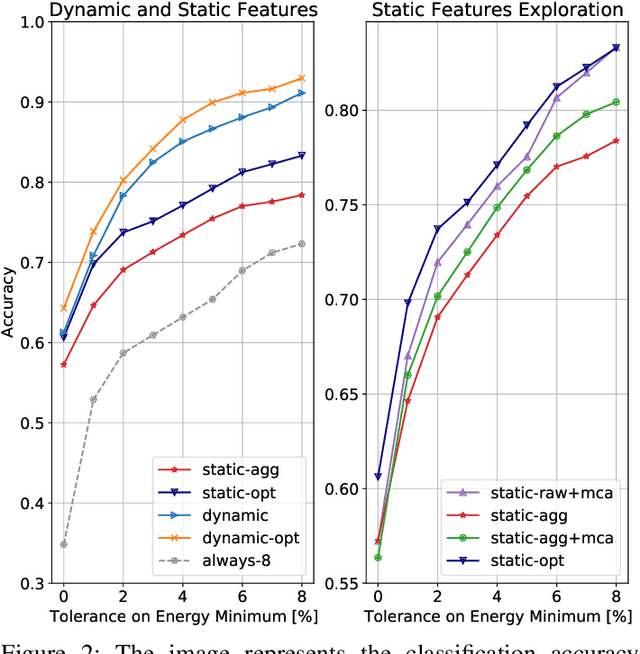
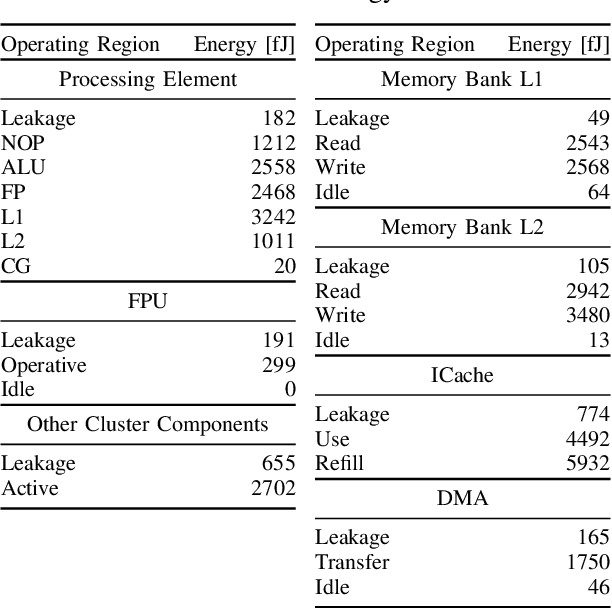
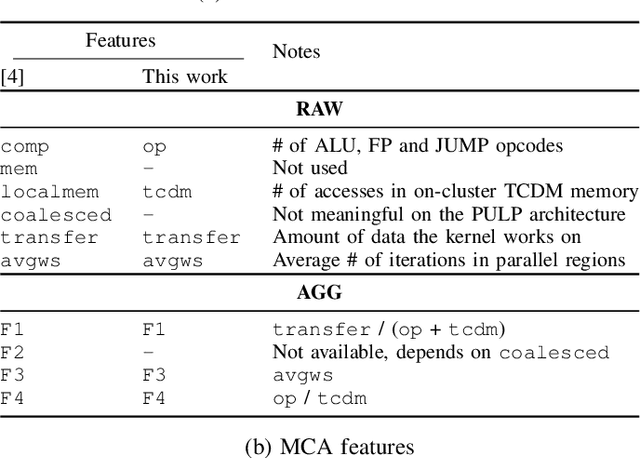
Abstract:The analysis of source code through machine learning techniques is an increasingly explored research topic aiming at increasing smartness in the software toolchain to exploit modern architectures in the best possible way. In the case of low-power, parallel embedded architectures, this means finding the configuration, for instance in terms of the number of cores, leading to minimum energy consumption. Depending on the kernel to be executed, the energy optimal scaling configuration is not trivial. While recent work has focused on general-purpose systems to learn and predict the best execution target in terms of the execution time of a snippet of code or kernel (e.g. offload OpenCL kernel on multicore CPU or GPU), in this work we focus on static compile-time features to assess if they can be successfully used to predict the minimum energy configuration on PULP, an ultra-low-power architecture featuring an on-chip cluster of RISC-V processors. Experiments show that using machine learning models on the source code to select the best energy scaling configuration automatically is viable and has the potential to be used in the context of automatic system configuration for energy minimisation.
 Add to Chrome
Add to Chrome Add to Firefox
Add to Firefox Add to Edge
Add to Edge